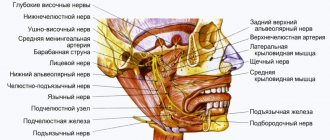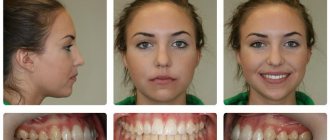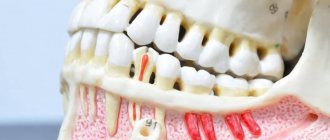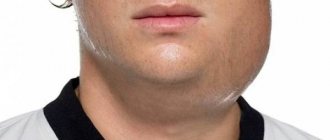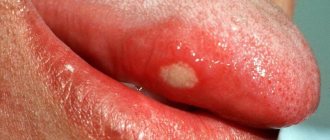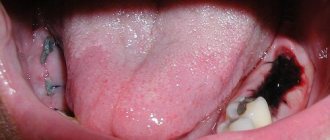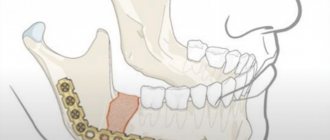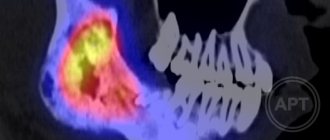You can contact Dr. Granov's clinic for treatment of jaw injuries. This is one of the areas of treatment that we do.
The jaw is the bony structure that holds the teeth in place. The upper jaw does not move, only the lower jaw moves. Its movements are necessary for eating food and for producing speech. Both jaws connect at a point called the temporomandibular joint (TMJ).
Jaw injuries include cracks, dislocations and fractures. With a fracture or crack, the bone breaks; with a dislocation, the bone changes location and flies out of the joint. Such injuries occur after physical activity (bruise, blow, fall). After appropriate treatment, they heal safely, but the dislocation may appear again.
Jaw injuries are dangerous because they can lead to various complications. Among them:
- breathing disorder,
- bleeding,
- blood entering the lungs
- problems with chewing food,
- problems with diction,
- infection of the jaw or facial structures,
- joint pain,
- numbness of the jaw or face,
- tooth displacement,
- edema.
Symptoms of a jaw fracture:
- pain in the cheek next to the ear, which increases with jaw movement;
- swelling of the face, blood in the mouth;
- immobility of the jaw, inability to open or close the mouth;
- when opening the mouth, only one side of the jaw moves;
- jaw pain that gets worse when chewing;
- dental injuries;
- swelling of the face or changes in the contours of the jaw;
- numbness of the face in the lower lip area.
Symptoms of a dislocated jaw:
- pain in the cheek next to the ear, which increases with jaw movement;
- feeling that the jaw is not positioned correctly in the joint;
- violation of diction;
- inability to close your mouth;
- drooling due to open mouth;
- spasm of the masticatory muscles or protrusion of the jaw forward;
- dental injuries.
First aid for jaw injuries
Jaw injuries require immediate medical attention. Call an ambulance or go to the nearest hospital. Before doctors arrive, you can put a bandage on your jaw to keep it immobilized. The bandage should be easy to remove.
Do not try to set a dislocation yourself or wait for the fracture to heal on its own. Be sure to contact a traumatologist.
Treatment of a jaw fracture
Treatment depends on the extent of the fracture. If the patient has a small crack in the bone, it will heal on its own. The doctor will only prescribe a painkiller.
Severe fractures require surgery to allow the bones to heal properly. After surgery, a bandage is applied to the jaw to allow it to heal quietly. The jaw takes 6 to 8 weeks to heal. At first, elastic bandages are additionally applied, which are then removed to allow the muscles to be developed and their mobility restored.
During treatment you can eat only liquid food. You should always have scissors with you to cut bandages in case the patient suddenly chokes on something or starts vomiting. Then go to the hospital to have a new bandage applied.
How to remove splints after a jaw fracture?
Typically, rehabilitation takes from one and a half months to two, depending on age and individual characteristics.
Complications after wearing a splint for a long time:
- discomfort and even pain in the jaw joint;
- the occurrence of diseases of teeth and gums.
The tire is removed in several short stages. The dentist sends the patient for a repeat x-ray and, if the fracture has healed, the fastenings of the structure are carefully removed using dental instruments. Upon completion of the procedure, the patient is prescribed special gymnastics to develop the jaw joint. Also, a specialist must examine the oral cavity to identify dental problems.
A visit to the dentist after removing the splint is an extremely important time in the process of treating a fracture. You can make an appointment with our specialists at the KRH-Medical clinic. We will provide you with professional assistance in removing jaw splints, conducting an examination and prescribing effective gymnastics.
Treatment of jaw dislocation
A dislocated jaw is treated simply: the doctor realigns the joint, placing the bone in the right place. Muscle relaxants or painkillers may be needed to relax tight muscles.
Then the jaw must be secured in a stationary state. To do this, the doctor applies a bandage. If the dislocation does not appear for the first time, then surgery will be needed to straighten it.
Recovery after a dislocation lasts 6 weeks. At this time, you should not open your mouth wide. When yawning and sneezing, the lower jaw should be supported with your hands.
Splinting for a jaw fracture
Splinting the jaw is a method that allows you to immobilize it during a fracture using special structures that ensure proper fusion of bones and minimize complications.
Types of splinting:
- One-sided. The structure consists of wires that are attached to the teeth. This method is the most convenient for the patient because it allows you to maintain jaw mobility.
- Two-way. Fixes both jaws in a stationary state, due to hooks and special rings.
- Double jawed. Used to treat complex fractures. The structure is placed on the teeth and connected using hooks and rings.
The process of applying a splint to the upper and lower jaw:
- Anesthesia and disinfection of the oral area.
- X-ray of the jaw, from which the doctor determines the severity of the fracture
- Administration of anesthesia and surgical fastening of bone fragments using screws, plates and threads.
- Splinting. Based on the severity of the injury, the doctor chooses which splinting method to choose. In the case of a fracture of the lower jaw, the splint is attached to entire parts of the surviving bones and tightened with rubber material. In case of a fracture of the upper jaw, contraction occurs due to titanium screws.
Features of applying a splint to a toothless jaw
Treatment of such fractures in the absence of teeth has some difficulties, however, there are several designs that ensure proper fusion of bones, in such a case:
- The Gunning-Port design is made of plastic, based on a cast of the jaws, bite ridges and an element with a hole. Apparatus of A. A. Limberg. It consists of plates that are intended for the upper and lower jaws, and columns that allow the plates to be held together.
- When a toothless jaw is fractured, it is mandatory to additionally install a sling, which securely fastens the chin and prevents the jaw from moving.
For such fractures, doctors often use prostheses, if they are present in the mouth. It is mandatory to additionally install a sling, which allows you to fix the chin.
When are the splints removed and how long does it take for the jaw to heal?
The length of time you wear a splint after such an injury depends on several factors:
- patient's age;
- complexity of the fracture;
- the presence of concomitant pathologies;
- speed of bone recovery.
The older the victim, the longer it will take to recover. If splinting of the jaw for a fracture was carried out without osteosynthesis, then the fixing structure is removed at 30-45 days. If such manipulation was carried out, then 5-14 days after that. The total period of complete rehabilitation is 1.5-2 months.
The splint for a jaw fracture is removed after the bone is restored. Before removing the fixing structure, a control photograph is taken. If a bone callus has formed at the fracture line, then there is no need to continue wearing a splint.
It will take at least 1 month for the damaged tissue to heal. With a complicated injury, this period can last up to 3-5 months.
Features of recovery
After removing the plaster, the patient feels discomfort. Joints lose elasticity. They become motionless. Rehabilitation will help. It will allow you to achieve the following results:
- Muscle recovery after injury;
- Stimulation of blood circulation from the day the cast is removed;
- Strengthening blood vessels;
- Protection against thrombosis;
- Reduced swelling;
- Return of mobility.
For complicated fractures and long-term immobility, rehabilitation prescribed by a professional is required. It must be carried out strictly according to the doctor’s recommendations from the removal of the plaster. Neglecting the rule will lead to complications.
Activities and auxiliary things
If the fracture of the limb was uncomplicated, it is enough to wear insoles. They will help not to overload the injured limb. If a person breaks a hip, the recovery time will be more difficult and lengthy. You can’t do it without a special program and devices.
Even in the clinic, the patient’s bed is equipped with a belt. A person grabs it with his hands in order to sit or rise comfortably. Doctors prescribe physical therapy in the first week after an injury, when canes and crutches are still used.
First, breathing exercises are prescribed for the patient. Balloons are used for this. Afterwards, exercises are prescribed, aimed at developing the mobility of the torso. After about a month, the doctor prescribes the following complexes:
- General. Designed for general human health.
- Special. To restore a diseased limb from the day the cast is removed.
Well-thought-out treatment and rehabilitation based on physical education can achieve the following goals:
- Restoring blood circulation through massage;
- Prevention of dangerous complications;
- Serious strengthening of the muscles at the fracture site;
- Restoration of motor ability.
To achieve the above goals, it is important to start exercising while lying down. After this period, quitting classes is not recommended. The features of each gymnastics option should be studied in more detail.
Recovery in a supine position
Exercise and loading after a limb injury should be started immediately. The muscles relax. The fragments grow together correctly. Here is an approximate complex of therapeutic exercises for the rehabilitation of a patient:
- Elbow and shoulder raises.
- Leg flexion and extension.
- Foot movements.
- Hand rotations.
Manipulations with the load should be performed approximately 10 times. They are carried out by healthy parts of the body. As for the sore leg, here it is necessary to lower, raise, abduct, and bring the leg to the body. At the initial stage, gymnastics should be performed with an assistant. Then, during rehabilitation, you can study independently.
At the initial stage of rehabilitation, the patient has swelling. To remove it, it is useful to wear support bandages and perform the following movements:
- Lying in bed, raise your legs slightly, hold them, lower them.
- Contraction and relaxation of the muscles of the limb.
- Flexion, subsequent extension of the fingers.
- Rotation of the feet.
- Pulling your legs to your chest.
As soon as the doctor realizes that the patient can walk, he is prescribed another exercise. The load increases. Medication treatment is stopped. The process of resuming walking is carried out with the help of a crutch. You can use a cane. After removing the plaster, do gymnastics:
- Lying on your back, hug your leg with your arms. Unbend, bend it.
- While sitting, move your leg quickly back and forth.
- Move your foot, drawing a figure eight.
From the day the cast is removed, the load is increased gradually, not quickly, under the supervision of a doctor. This is expressed in the use of weighting agents. The number of repetitions and the total load also increases.
Rehabilitation after a jaw fracture
The duration of the rehabilitation period after a jaw fracture depends on what methods were used for treatment - conservative or surgical. Splinting for a fracture of the lower or upper jaw is carried out when there are no fragments or displacement after the injury. This procedure involves connecting jaw fragments with a single structure and then completely fixing them.
There are 3 types of splinting:
- One-sided. It is carried out if one half of the lower or upper jaw is damaged as a result of injury. Splinting is carried out with copper wire.
- Two-way. The splint is applied to the jaw on both sides. The teeth are fixed with rigid wire.
- Double jawed. Used for bilateral fractures with displacement of fragments. Copper wire is attached to the remaining fixed teeth. If there are none, then the splint is installed in pre-drilled holes in the alveolar bone. After this, the lower and upper jaws are connected with rubber rings, and the structure is fixed with hooks.
Since the victim has difficulty eating, liquid or porridge-like food is recommended during the rehabilitation period. This can be vegetable or fruit puree, yogurt and kefir, milk, puree soup, baby formula and cereal, grated meat diluted in broth. After removing the splint, the transition to solid food should be done gradually. This is necessary not only for the gradual development of chewing function, but also to prepare the stomach for the usual diet.
Rehabilitation also includes taking medications that eliminate inflammation and pain, promote rapid healing, and prevent the development of bacterial infections. To fully restore all functions of the damaged part of the face, it is recommended to maintain enhanced oral hygiene, perform physical therapy, and carry out prescribed physical procedures. The active phase of rehabilitation begins a month after the damaged tissues have healed.
Physiotherapy
Physiotherapeutic procedures help speed up the process of bone fusion, improve blood circulation and tissue regeneration.
In the case of the injury in question, the following procedures are prescribed:
- Electrophoresis with calcium. Promotes normal bone healing. There are 15 procedures, each lasting 20 minutes;
- Ultraviolet irradiation of the damaged area. UV rays promote the production of vitamin D, which is necessary for the absorption of calcium. Procedures are carried out every 3 days, lasting 30 minutes.
- Magnetotherapy. Both low-frequency and high-frequency effects are used. Each procedure is repeated 10 times for 20 minutes. Signs of inflammation and swelling are eliminated, pain is relieved.
Stages
In order not to harm your health after a hip or lower leg injury, it is important to follow a certain course of action during rehabilitation. It consists of the following stages:
- The first stage from the date of plaster removal. Thoroughly rubbing the affected area. Carrying out a massage. Doing light exercises. Application of local drugs to stimulate bone regeneration.
- Second phase. Performing complex sets of exercises. Exercise therapy is prescribed. Physiotherapy is carried out.
- Third stage. Activity increases. Walks are available. Referrals for spa treatment are given.
It is important to accompany each stage of rehabilitation after removing the cast with a diet. It will speed up your metabolism. Quickly strengthens bone tissue and muscles after injury.
